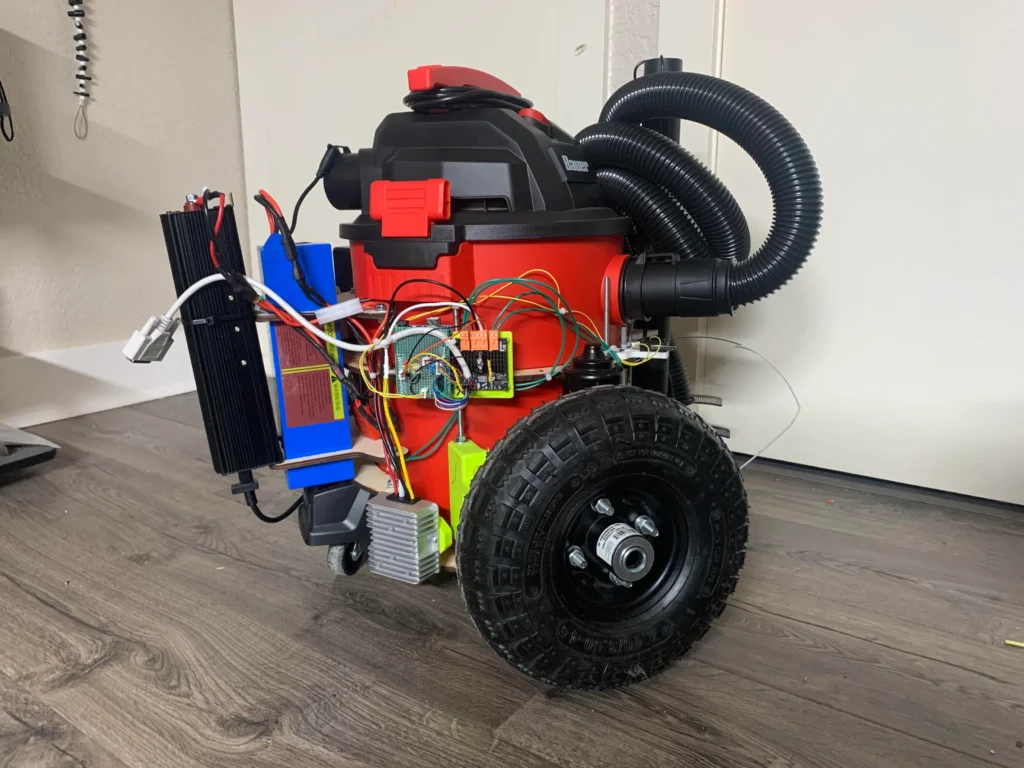
A robotic vacuum, such as a Roomba, offers a lot of convenience. Instead of having to vacuum and sweep your own floors, you have a little maid robot to do the job for you. But robotic vacuums have very little power and capacity, which makes them useless for anything other than light cleaning. Clay Builds wanted something more substantial, so he created his own Roomba on steroids based on a shop vac.
The concept here is almost exactly the same as any generic robotic vacuum on the market, just at a bigger scale. The beefy shop vac will happily suck up gallons of debris without complaint, while the oversized tires can traverse even the roughest garage floors.
The drive system is similar to most rover-style robots, with two motorized wheels. An Arduino UNO Rev3 board controls the drive motors (automotive windshield wiper motors) through two DFRobot drivers. The frame is a combination of 3D-printed parts and laser-cut wood. DIY workarounds, like a bump sensor made using a limit switch and a wire hanger, helped to keep costs down. A huge inverter takes DC power from the large hobby lithium battery and turns it into household AC power for the shop vac’s motor.
The user can pilot the robot manually using a PlayStation controller, but there is also an autonomous mode like you see on consumer robotic vacuum cleaners. It doesn’t have any true room-mapping capability, but rather just moves until it bumps into something and then turns by a random amount.
In something like a carpentry workshop, this would be very useful.
